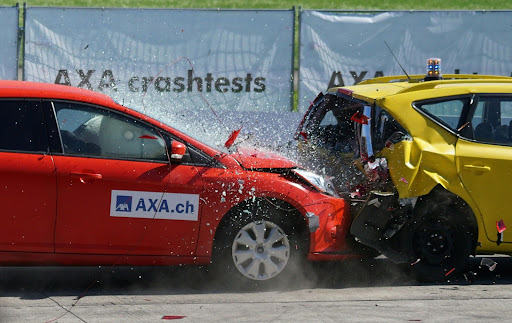Expert Insights for Understanding Liability in Rear-End Collisions
We see quite a lot of rear-end collisions and accidents happening these days. A car or a bike crashing into another car’s back is one of those common rear-end collisions.
These accidents can damage your vehicles and could be frustrating. Meanwhile, they can also cause some serious injuries. According to USA Today, 42,795 people were killed in motor vehicle accidents in 2022. So the probability of rear-end collisions happening is quite high.
However, figuring out who’s to blame in a rear-end collision is difficult.
Knowing who’s at fault in these accidents is important since it affects your insurance claims and legal proceedings. By the end of this article, you’ll have an idea of what you should do when you’re in the same position.
Overview of Rear-End Collisions
A rear-end collision takes place when a vehicle collides with another in front of it. You usually see these kinds of collisions when the vehicle at the front stops or slows down. At the same time, the vehicle behind could be traveling faster than the front vehicle.
Similarly, there are more reasons for rear-end collisions. Firstly, during peak hours, the risk of rear-end collisions increases due to too-close follow-ups and the impatience of drivers. Furthermore, you find high traffic volumes on major highways, where collision chances increase.
These kinds of accidents usually happen in cities, where traffic is heavy and congestion is frequent. Recently, Atlanta police officers were involved in a crash that caused a traffic jam on I-285. The above news highlights how common crashes and rear-end collisions are, in cities like Atlanta.
Additionally, Atlanta has a lot of stop-and-go traffic, which makes these accidents more likely. Therefore, if you face this situation as a victim, consulting a qualified Atlanta car accident lawyer would be ideal.
Having an experienced lawyer on your side makes it easier to deal with traffic rules and insurance claims. As a result, the party facing consequences for their actions becomes more liable.
Identifying Liability in Rear-End Collisions
Most of the countries’ law presumes that the rear driver is at fault. The reason is to maintain a safe driving distance and stop in time to avoid a collision. However, this rule doesn’t always apply.
A driver can also get penalized for displaying unexpected or reckless behavior. For example, sudden stepping on the brakes, taking an unexpected reverse, etc. The other reason could be the faulty brake lights that don’t light up when applying brakes.
In recent times, the death rates have surged due to drivers’ negligence. The American Psychological Association once featured an article stating psychologists were called on to deal with traffic deaths.
A party claiming an exception to the presumed fault rule usually needs to prove it. Therefore, gathering evidence like dashcam footage, witness statements, and a detailed police report becomes crucial. Atlanta Personal Injury Law Firm advises gathering details about the vehicle, the driver, and the road conditions as well. These documents will help you in strengthening your case.
Ideally, you’re better off consulting a qualified car accident lawyer to help you navigate these legal complexities.
Preventive Measures and Best Practices
You can reduce your chance of getting into a rear-end collision by becoming more proactive. The following 3 important steps will help you in avoiding rear-end collisions:
Master the 3-Second Rule
Don’t follow too closely. A suitable rule of thumb is the “3-second rule”. Imagine a landmark, such as a signpost, and count how many seconds the car ahead of you takes to pass it. You should preferably be at least three seconds behind.
Maintain Your Car
Your car maintenance becomes one of the key factors. Studies show that 50.6% of Gen Z citizens take care of their car and maintain it to the best of their abilities.
Accidents often happen when brakes don’t work or lights don’t work. Therefore, try to schedule regular checkups and keep your vehicle in tip-top condition.
Take Advantage of the Tech Revolution
Modern cars are equipped with safety features such as Automatic Emergency Braking (AEB). The system detects slowing traffic ahead and automatically applies the brakes.
This feature could potentially prevent a collision. Hence, consider this feature when buying a car.
To sum up, it’s hard to know who’s at fault in a rear-end collision, but understanding how it’s decided can help. If you’ve been in a rear-end collision, especially under unusual circumstances, don’t hesitate to get legal help.
Most importantly, stay informed and take precautionary steps to avoid rear-end collisions.
Keep an eye for more latest news & updates on Aoomaal!







